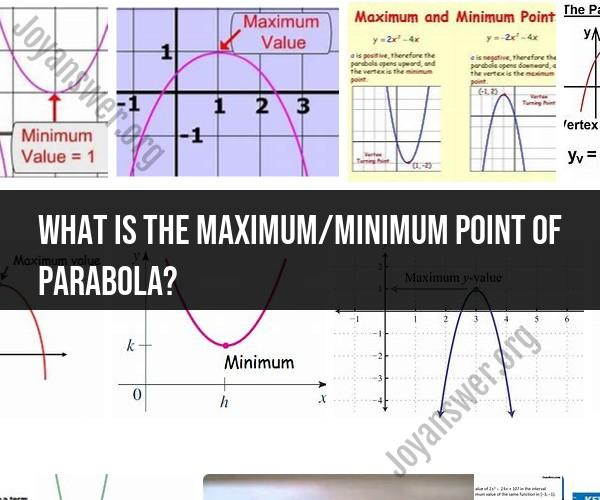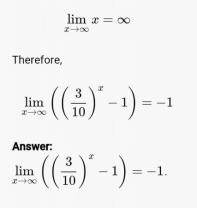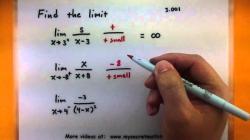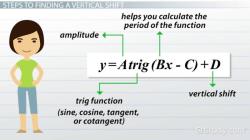What is the maximum/minimum point of parabola?
The maximum or minimum point of a parabola is a critical point on the graph of the parabolic function where the function reaches its highest or lowest value. The nature of this point (maximum or minimum) depends on the direction the parabola opens.
Maximum Point: If the parabola opens downward (like an inverted "U"), the highest point on the parabolic graph is called the maximum point. The coordinates of this point are typically denoted as , where is the x-coordinate, and is the maximum value of the function. In mathematical terms, represents the maximum point.
Minimum Point: If the parabola opens upward (like a "U"), the lowest point on the parabolic graph is called the minimum point. Similar to the maximum point, the coordinates of the minimum point are typically denoted as , where is the x-coordinate, and is the minimum value of the function. In mathematical terms, represents the minimum point.
To find the coordinates of the maximum or minimum point of a parabola, you can use calculus. Here are the general steps:
Write the Parabolic Function: Start with the equation of the parabola in the form , where , , and are constants.
Calculate the Derivative: Find the derivative of the parabolic function with respect to , which gives you the slope of the tangent line at any point on the graph.
Set the Derivative Equal to Zero: To find the x-coordinate of the maximum or minimum point, set the derivative equal to zero and solve for . This will give you the x-coordinate of the critical point(s).
Use the Second Derivative Test: To determine whether the critical point is a maximum or minimum, you can use the second derivative test. Take the second derivative of the function and evaluate it at the critical point(s).
- If at the critical point, it's a minimum.
- If at the critical point, it's a maximum.
Find the Corresponding y-Coordinate: Plug the x-coordinate(s) of the critical point(s) back into the original function to find the corresponding y-coordinate(s).
State the Maximum or Minimum Point: Write down the coordinates of the maximum or minimum point as , where is the x-coordinate, and is the maximum or minimum value of the function.
These steps allow you to determine the maximum or minimum point of a parabola, which can be crucial in applications like optimization problems or analyzing the behavior of quadratic functions.
Exploring the Maximum and Minimum Points of a Parabola
A parabola is a curve that is symmetrical about a vertical axis. It has a maximum or minimum point, which is the highest or lowest point on the parabola.
Calculus Insights: Locating Extremes on a Parabolic Curve
Calculus can be used to locate the maximum and minimum points of a parabola. To do this, we need to find the derivative of the parabolic function. The derivative of a function tells us the rate of change of the function at a particular point.
The maximum and minimum points of a parabola occur where the derivative is equal to zero. This is because the rate of change of the function is zero at these points.
Analyzing the Peaks and Valleys of Parabolas
To determine whether a maximum or minimum point has occurred, we need to look at the second derivative of the function. The second derivative of a function tells us the rate of change of the rate of change of the function.
If the second derivative is positive at a point, then the function is concave up at that point, and a minimum point has occurred. If the second derivative is negative at a point, then the function is concave down at that point, and a maximum point has occurred.
Example
Consider the parabola with the equation y = x^2. The derivative of this function is y' = 2x. The second derivative of this function is y'' = 2.
The derivative y' is equal to zero at x = 0. The second derivative y'' is positive at x = 0. Therefore, the parabola has a minimum point at (0, 0).
Conclusion
Calculus can be used to locate the maximum and minimum points of a parabola. The maximum and minimum points occur where the derivative is equal to zero. The second derivative can be used to determine whether a maximum or minimum point has occurred.
By understanding how to locate the maximum and minimum points of a parabola, we can gain insights into the behavior of parabolic functions and apply this knowledge to real-world problems.












